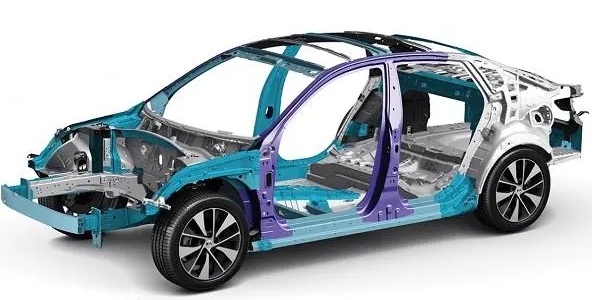Advancing Electric Mobility: How Metal Stamping Drives Innovation in Electric Vehicle Manufacturing+ View more
Advancing Electric Mobility: How Metal Stamping Drives Innovation in Electric Vehicle Manufacturing
+ View more
Date:2023-12-29 11:00
Introduction
As the world shifts towards a sustainable future, electric vehicles (EVs) have emerged as a key solution to reduce carbon emissions and combat climate change. Behind the scenes, metal stamping is one crucial technology driving innovation in electric vehicle manufacturing. In this article, we will explore how metal stamping is pivotal in advancing electric mobility, revolutionizing EV production processes, enhancing performance, and contributing to the widespread adoption of electric vehicles.

1. Lightweight Design for Enhanced Efficiency
Metal stamping enables the creation of lightweight yet durable components critical to electric vehicles. By utilizing specialized alloys and advanced stamping techniques, manufacturers can produce high-strength materials that reduce the overall weight of EVs. This weight reduction leads to increased energy efficiency and extended battery range, addressing one of the key challenges in electric mobility.
2. Complex Component Production
Electric vehicles rely on intricate designs and complex components to deliver optimal performance. Metal stamping excels at producing these intricate parts with precision and consistency. From structural components like chassis and battery enclosures to smaller parts such as brackets and connectors, metal stamping ensures the accurate formation of these components, enabling seamless integration into electric vehicle systems.
3. Streamlined Production Processes
Metal stamping offers streamlined production processes that contribute to the efficient manufacturing of electric vehicles. With automated stamping lines and robotic systems, manufacturers can achieve high-volume production while maintaining precise quality control. This efficiency not only reduces production time but also lowers costs, making electric vehicles more accessible to consumers.
4. Customization and Flexibility
The versatility of metal stamping allows for customization and flexibility in electric vehicle manufacturing. Manufacturers can adapt stamping processes to accommodate various design requirements and production volumes. Whether creating unique body panels or customizing interior components, metal stamping empowers EV manufacturers to meet the demands of individual customers and market trends.
5. Enhanced Safety and Structural Integrity
Safety is paramount in electric vehicle design, and metal stamping ensures the production of components that meet rigorous safety standards. By utilizing advanced stamping techniques, manufacturers can produce parts with high structural integrity, ensuring the safety of occupants in the event of a collision. Metal-stamped components contribute to the overall rigidity and crashworthiness of electric vehicles, enhancing passenger protection on the road.
6. Sustainable Manufacturing Practices
Metal stamping aligns with the sustainability goals of the electric vehicle industry. With its efficient material usage and minimal waste generation, metal stamping reduces the environmental impact of manufacturing processes. Additionally, the recyclability of stamped components allows for the recovery and reuse of materials, contributing to the circular economy principles embraced by the electric mobility sector.
7. Collaborative Innovation and Future Prospects
The continued collaboration between metal stamping technology providers, EV manufacturers, and research institutions drives further innovation in electric vehicle manufacturing. Advancements in stamping techniques, materials science, and automation continue to enhance the efficiency and capabilities of metal stamping in the production of electric vehicles. As technology evolves, metal stamping will play an instrumental role in shaping the future of electric mobility.
Conclusion
Metal stamping catalyzes innovation in electric mobility, revolutionizing the way electric vehicles are manufactured. Through lightweight design, complex component production, streamlined processes, customization, enhanced safety, sustainable practices, and collaborative innovation, metal stamping contributes to the advancement of electric vehicle manufacturing. As the demand for electric vehicles grows, the role of metal stamping becomes increasingly critical in enabling the widespread adoption of electric mobility, propelling us towards a cleaner and more sustainable future.
Share to:
Recommend wonderful blog posts

